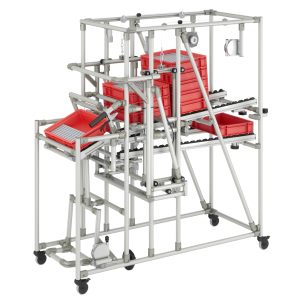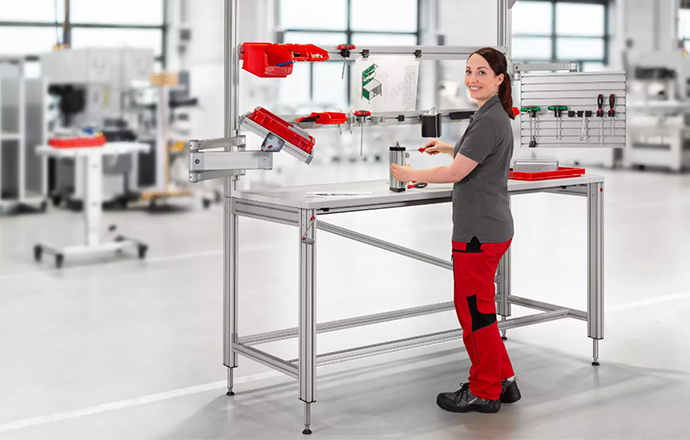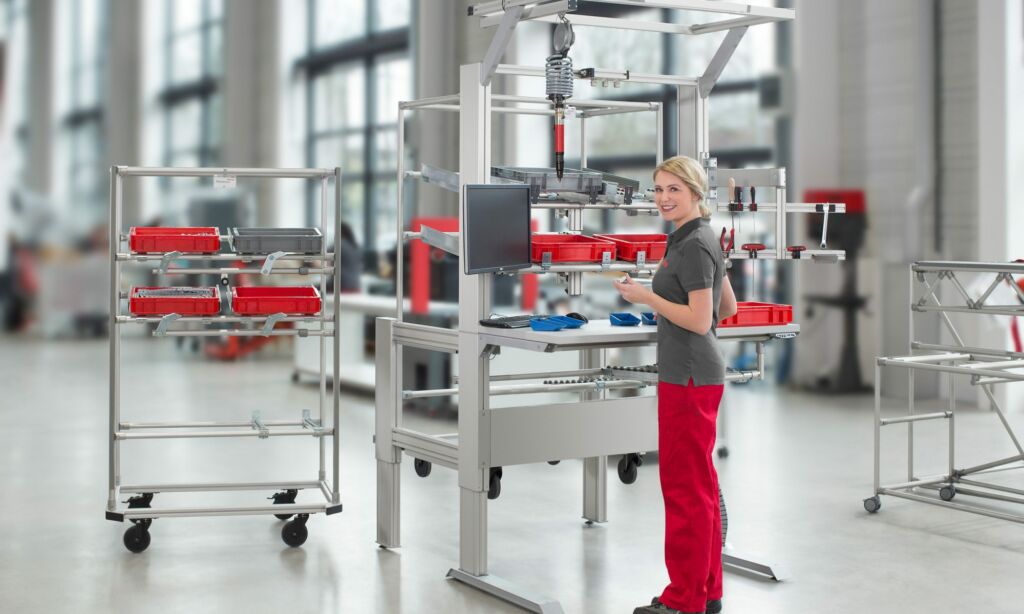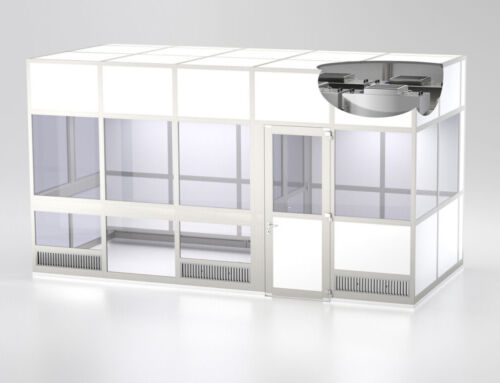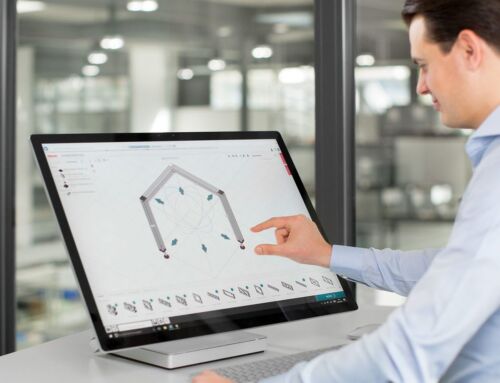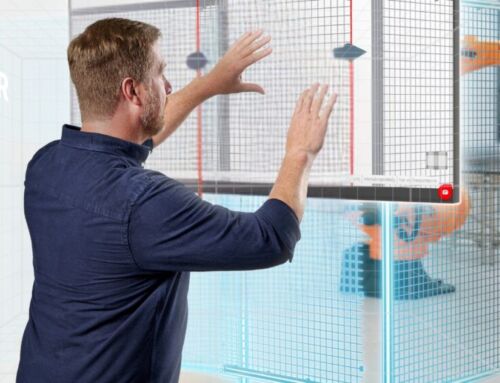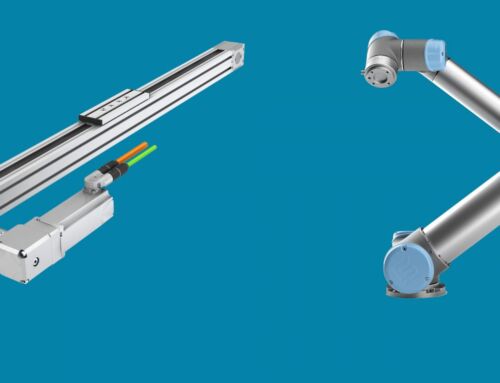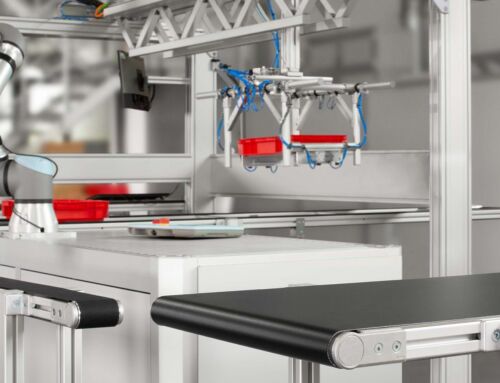Constantly shrinking batch sizes and ever shorter product lifecycles mean greater attention is now being paid to the time and money that can be saved using the alternative automation method of Karakuri/LCA.
Karakuri/LCA (= low-cost automation) is a particularly intelligent form of automation that generally requires no drives, electricity, sensors or compressed air. Instead, it relies on spring force, gravity and lever principles – something that makes the method all the more relevant in these times of climate change and soaring energy prices. Hybrid Karakuri additionally uses traditional drives, but that is an exception. As an integral part of lean production, Karakuri/LCA is all about reducing waste (Muda) and therefore makes it possible to focus on processes that add value. The components of the Lean Production Building Kit System from item are particularly helpful to experienced staff when it comes to creating process automation setups faster and more cost-effectively than with conventional automation solutions. In an independent practical test carried out by NORDAKADEMIE, Karakuri/LCA achieved savings of around 40 percent on material and labor costs compared to a traditional automation solution.
How, though, should companies that are thinking about introducing Karakuri/LCA get started? Although some Karakuri/LCA applications are highly complex, simple constructions are also possible. As a result, anyone who is familiar with the philosophy and methods of lean production can build on this knowledge and, for example, continue their Karakuri/LCA training online in the free item Academy. Besides an introduction to the basics of Karakuri/LCA, they will also find assembly guides for products such as a gravity-operated return trap or a lift. On this basis and with appropriate scaling, relatively small solutions can already be implemented. The main aim of this blog post, however, is to demonstrate how larger companies can optimize the introduction of Karakuri/LCA and to outline the relevant requirements that need to be met.
Boosting added value with Karakuri/LCA
Would you like to discover even more about automation using Karakuri/LCA? Whether you’re a lean novice or an experienced CIP expert, we offer the appropriate support at every level.
Creative minds are essential for lean production and Karakuri/LCA
Fitters with creative minds are a key factor when it comes to successfully establishing Karakuri/LCA. They need to use their ingenuity and try things out in situ. The incline of a roller conveyor, for example, depends on numerous individual factors such as the goods being transported and the conveyor’s position. That makes producing a CAD drawing counterproductive, whereas simply getting to work based on the product to be transported and a sketch of the task in hand has proved effective. Once the setup is complete, experienced fitters just need to carry out a test run and one or two improvement cycles. Identical and similar setups are created in no time at all on this basis, requiring just a fraction of the materials and time that would be needed for a custom machine. Besides the creativity factor, a sense of responsibility is also vital. Given that fitters aren’t implementing a Karakuri/LCA application based on a drawing but designing it themselves, they need to be prepared to take responsibility for it. In addition to having an understanding of mechanics, they must therefore also be willing to resolutely stand by the result when presenting it to internal customers.
Supporting and facilitating employees who demonstrate such capabilities is important, and it’s definitely helpful to have already introduced lean production at the company. Staff’s knowledge and experience are particularly appreciated in the lean production context. Employees are at the Gemba, that is to say the place where value is actually added, and that means they know best how to drive forward the continuous improvement process (CIP). This is always associated with a positive attitude towards mistakes, regarding them as precious because they alone show how things can be improved. Fitters who are responsible for Karakuri/LCA therefore need the space and freedom to be able to try things out. Dedicated areas for building Karakuri/LCA solutions are also worthwhile in this context. Ideally, fitters will have their own materials and tools. Otherwise, the crucial time advantage of Karakuri/LCA is lost. Despite this strong hands-on mentality, finished Karakuri/LCA applications should always be documented so that staff at other branches also benefit from their colleagues’ creative ideas. This is especially important in the case of more complex solutions. Here’s an example of the setup for the type of simpler solutions that are covered in the item Academy:
Passing on Karakuri/LCA know-how – the ideal solution for every scenario
When it comes to facilitating employees, cooperating with a specialist such as item is a must. With the Lean Production Building Kit System and practical training, item can offer targeted support for Karakuri/LCA. These courses are aimed at larger companies, as the necessary personnel capacities and space are required for a comprehensive introduction of Karakuri/LCA. There is also a separate educational concept for smaller businesses – after successfully completing the online Karakuri/LCA training in the item Academy, the ideal next step is a course on the basics of item components for lean factory equipment engineering. When it comes to effective approaches for larger item customers, if they are facing an urgent challenge that needs to be resolved quickly, it’s advisable to start with a Karakuri/LCA workshop covering the basics of the Lean Production Building Kit System and the construction of relatively simple Karakuri/LCA frames. This is followed by specific Karakuri/LCA training.
The alternative takes more time and starts with a course on the basics of the Lean Production Building Kit System. Participants should then gain their own experience. This is followed by the specific Karakuri/LCA training. In both cases, the next step is long-term support in the form of further workshops, where participants create Karakuri/LCA solutions together. The aim is to ensure everyone continues making progress. Involving design engineers is also important. Their knowledge of the basic theory of mechanics and physics is extremely valuable. This involvement avoids competition between fitters and design engineers and leverages synergies. Of course, participants ultimately implement Karakuri/LCA independently at their companies, they reap the full benefits of the possibilities offered by this fascinating automation method.
Are you interested in exciting reports, innovations, and releases from the world of lean production? item has exactly what you’re looking for! Simply subscribe to the item blog by completing the box at the top right.
